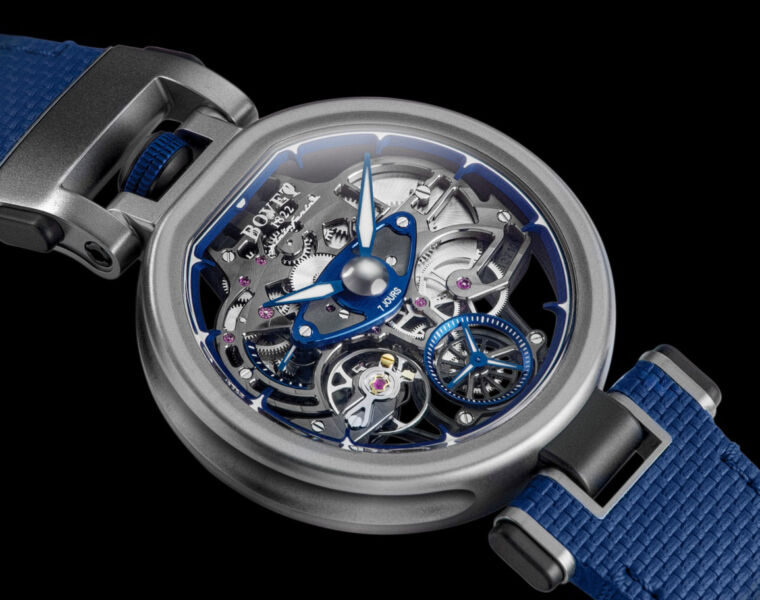The world’s oldest continuous watch company Vacheron Constantin reveals the fine art of Openworking and metal tracery
Openworking a watch movement into a masterpiece of scintillating metal tracery demands exceptional deftness and precision, generating considerable added value in the process. Scrupulous observation of a series of mandatory steps is vital to the successful production of that delicate combination of airy transparency and melodious gong strikes that mark one of classic watchmaking’s most outstanding accomplishments: the Openworked Minute Repeater.
At Vacheron Constantin, the process begins with the complete manufacture of the movement blank, i.e. of every component before any finishing or assembly. Following this, the movement’s mainplate,  bridges, bars and steel parts are assembled until a perfect fit is obtained and the watch’s rate is satisfactorily regulated. The repeater mechanism is then put in place and meticulously adjusted: its jumpers, cams and springs are mounted, steel parts are fitted and adjusted, the striking work is tested to check its response and regularity .
bridges, bars and steel parts are assembled until a perfect fit is obtained and the watch’s rate is satisfactorily regulated. The repeater mechanism is then put in place and meticulously adjusted: its jumpers, cams and springs are mounted, steel parts are fitted and adjusted, the striking work is tested to check its response and regularity .
The assembled movement will now be completely dismantled to allow craftsmen to pierce and openwork its components’ plane surfaces: the mainplate, bridges and bars in German silver – a fine quality of brass with good resistance to oxidation – undergo a radical transformation during dozens of hours of painstaking work. The mainspring barrel and the hour wheel are similarly decorated. These components lose up to half of their initial metal volume in the course of a series of delicate operations requiring endless patience and ever watchful deftness of touch.
To start, a number of holes are drilled in the bridges, bars and mainplate on a jig boring machine, preluding more elaborate machining sequences. Following a precise cutting plan, the various workpieces are subjected to a slow-electrodischarge process according to a predefined pattern in order to remove part of the metal. This operation both prevents any risk of overheating and provides a perfect finish.
Now machines yield to craftsmen. Their job is to embellish everything the eye can see. The surface of every previously pierced and machined part is methodically touched up, decoratively drawn out with a file then painstakingly bevelled by hand. Both sides of every visible part of the movement are chased and engraved by hand. The mainspring barrel and the hour wheel are also openworked by hand and entirely chased.
 The watchmaker in charge of the watch now takes over, further refining the work and adding various finishing touches: the sink, or concave chamfer, around each hole (in which the watch jewels are fitted) receive their final polishing with a diamond-tipped tool. The mainplate, bridges and bars, mainspring barrel and hour wheel are then “color finished”, i.e. coated in 18K red gold to match the watch case, itself fashioned in solid 18K red gold. The practical, technical reason for resorting to this precious alloy is that it unquestionably possesses the most satisfactory acoustic properties.
The watchmaker in charge of the watch now takes over, further refining the work and adding various finishing touches: the sink, or concave chamfer, around each hole (in which the watch jewels are fitted) receive their final polishing with a diamond-tipped tool. The mainplate, bridges and bars, mainspring barrel and hour wheel are then “color finished”, i.e. coated in 18K red gold to match the watch case, itself fashioned in solid 18K red gold. The practical, technical reason for resorting to this precious alloy is that it unquestionably possesses the most satisfactory acoustic properties.
Once the decoration phase is over, however, the components continue to require the watchmaker’s attention. The openworking process having deprived them of a considerable amount of the original metal, some deformation inevitably ensues. They are therefore carefully reshaped to their definitive, precise dimensions before the movement is reassembled and adjusted and its under-dial repeater mechanism fitted on. The complete movement is then put through its paces before casing up, which for the Minute Repeater includes some unique aspects.
The sound quality of the repeater strike depends largely on the movement’s intimate association with the back and sides of the case. Absolute solidarity is essential, requiring the watchmaker to secure the movement very tightly to its precious-metal shell. Tuning the repeater itself presents difficulties of a different kind. Only a very keen ear enables the watchmaker to fine-tune the repeater gongs properly, with a low-pitched note for the hours and a higher-pitched one for the minutes.
The process does not quite end even when the case back is screwed tight. The Minute Repeater will now be observed and tested in all timing positions while the repeater’s winding tension and release mechanisms are checked and rechecked before the watch is delivered to its owner. By that time, the Minute Repeater’s movement alone will have absorbed some 700 hours of work – not counting the time and skill expended on fashioning the case and the dial.





You must be logged in to post a comment.